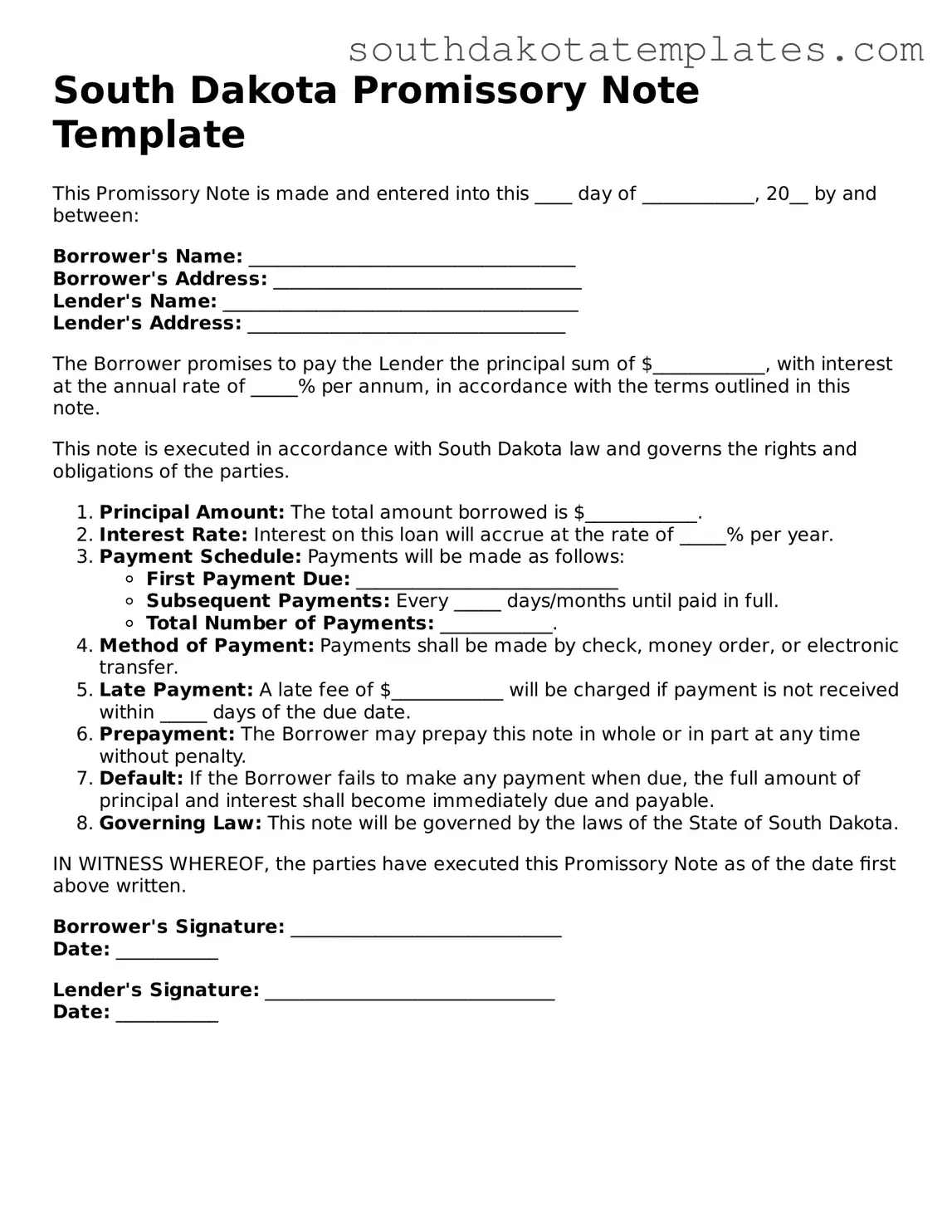The South Dakota Promissory Note form serves as a crucial financial instrument for individuals and businesses alike, facilitating the borrowing and lending process. This document outlines the terms of a loan, detailing the amount borrowed, interest rates, repayment schedule, and any collateral involved. By clearly stating the obligations of both the borrower and the lender, it helps to prevent misunderstandings and disputes. In South Dakota, specific legal requirements must be met for the note to be enforceable, including signatures from both parties and the date of the agreement. Understanding these key elements is essential for anyone entering into a lending arrangement, as they provide clarity and protection for all parties involved. Whether you are a lender seeking to secure your investment or a borrower needing funds, the South Dakota Promissory Note form is an indispensable tool in your financial dealings.
